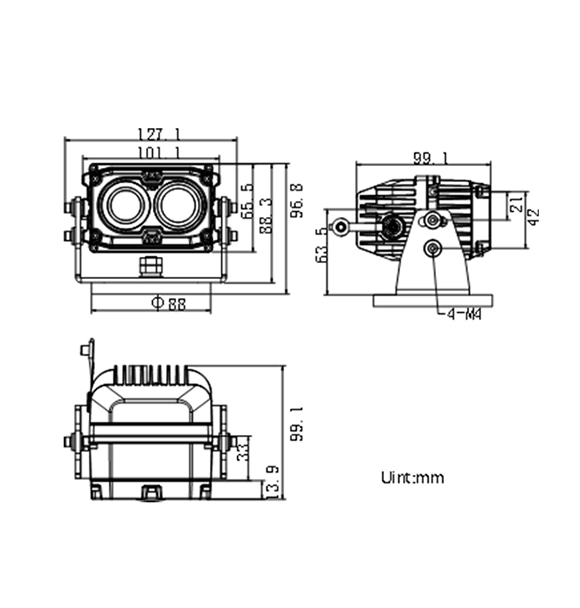A thermal night vision scope utilizes heat differential between a target and its surroundings to identify and display an object. This is unlike other forms of night vision, which amplify the amount of ambient light surrounding a target.
Most animals just like humans are endotherms and maintain a constant body temperature. Despite the temperature of the surrounding. This makes them release signatures of heat to the surrounding. And this is what is picked up by the thermal scope.
How the thermal scope works are its main advantage. The fact that it does not require ambient lighting means that it will function just as well in complete darkness. The scope is also attractive to many crossbow hunters because it can be used both day and night without the lens getting damaged.
Our supplier provides thermal night vision monoculars, thermal imaging night vision binoculars, night vision thermal scope and driver vision enhancer DVE for sale. Contact us for more information!
DRIVER VISION ENHANCER (DVE) is a driving device for night driving. Through thermal imaging video images, it helps drivers Helps the driver to drive safely at night without turning on the lights or low light. The driver is able to detect and monitor The driver is able to detect and monitor the road and nearby pedestrians and react to potential hazards in a timely manner.
Suitable for fog, smoke and other adverse conditions, to ensure that the transport vehicle at night with lights closed normal safe driving, to achieve all-day Transport work around the clock.
Main Performance
Adopt high performance processing chip and image detail enhancement technology.
Equipped with display screen to show local images.
IP67 waterproof level.
Compact design, easy to operate.
The driver is composed of night vision camera, display and other accessories, according to the number of channels, can distinguish between monocular and binocular. The monocular driver has only one thermal imaging channel, while the binocular driver has one thermal imaging channel and one visible light channel.

Nighttime night vision is enhanced by thermal imaging. The heat that is produced by the object you are trying to see is measured using thermal imaging. It then changes over the temperature into a picture for you, which you can then see. On the other hand, if there isn't enough light at night, night vision can be hard to use to see things that thermal imaging can see.
The distinctions between thermal imaging and night vision cameras are striking. The objects you see through a night vision camera can be greatly magnified. But, taking a picture of something with a night vision camera is impossible if there isn't enough light.
On the other hand, thermal imaging does not rely on visible light, and these thermal imagers are unable to see visible light. The heat that an object or person emits is what a thermal imager can see and detect. Thermal imagers translate the temperature of an object's surface into an image for you, regardless of whether it is daylight or light.
Night vision cameras work just like human eyes, the way they image almost share the same fundamental rule. When the reflected light of an object or person reaches your eyes or your night vision camera, you can see them. Similar to night vision cameras, they take pictures and then magnify them so you can see them better.
The creation of an image in thermal imaging is not dependent on lights. It operates entirely differently than night vision cameras.
electromagnetic radiation, and thermal energy are all forms of energy that can be emitted by any object or person in the universe. These radiations' heat or temperature can be seen, detected, and analyzed with a thermal imaging camera. Therefore, a thermal imaging camera can capture images of anything, day or night, with relative ease. The more you can see of the source, the higher its temperature.